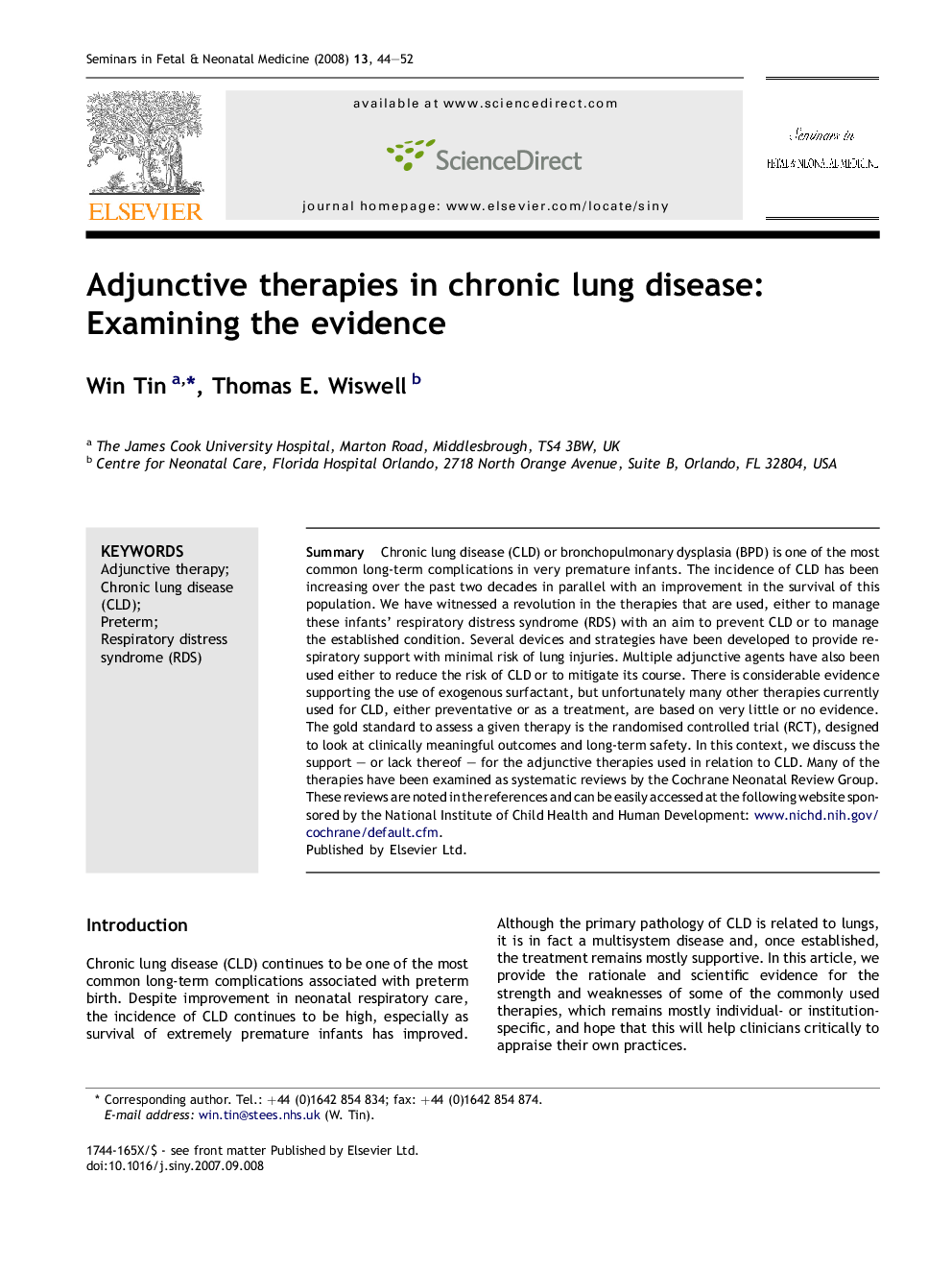| Article ID | Journal | Published Year | Pages | File Type |
|---|---|---|---|---|
| 3974461 | Seminars in Fetal and Neonatal Medicine | 2008 | 9 Pages |
SummaryChronic lung disease (CLD) or bronchopulmonary dysplasia (BPD) is one of the most common long-term complications in very premature infants. The incidence of CLD has been increasing over the past two decades in parallel with an improvement in the survival of this population. We have witnessed a revolution in the therapies that are used, either to manage these infants' respiratory distress syndrome (RDS) with an aim to prevent CLD or to manage the established condition. Several devices and strategies have been developed to provide respiratory support with minimal risk of lung injuries. Multiple adjunctive agents have also been used either to reduce the risk of CLD or to mitigate its course. There is considerable evidence supporting the use of exogenous surfactant, but unfortunately many other therapies currently used for CLD, either preventative or as a treatment, are based on very little or no evidence. The gold standard to assess a given therapy is the randomised controlled trial (RCT), designed to look at clinically meaningful outcomes and long-term safety. In this context, we discuss the support – or lack thereof – for the adjunctive therapies used in relation to CLD. Many of the therapies have been examined as systematic reviews by the Cochrane Neonatal Review Group. These reviews are noted in the references and can be easily accessed at the following website sponsored by the National Institute of Child Health and Human Development: www.nichd.nih.gov/cochrane/default.cfm.
